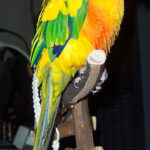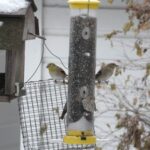Building an aviary is a great thing to do for your birds, as it will allow them to fly around and enjoy nature as though they were wild. It also allows you to enjoy them without having to deal with the mess that several indoor bird cages would entail. The size of your aviary will depend upon how much room you have available to use, what kind of birds you plan to keep and how much room these types of birds require.
Choosing Where To Put Your Aviary
A bird aviary is a very special thing to build. It is meant to make your birds feel more comfortable than they would if you were to keep them cooped up in a cage. An aviary will give them more room to spread their wings and feel as though they were a part of nature. With this in mind, you may be wondering where the best place for your bird aviary would be. While some people do choose to house their aviary within their home or garage, the best place for one is actually outside. Therefore, you should take a look at your backyard and make sure that you have room for an aviary before you begin building one.
Materials You Will Need
To build your bird aviary, you will need 2×4 wood, galvanized nails, a hammer, some wire mesh and a staple gun.
Step-By-Step Instructions
Now that you have gathered all of your supplies together and dedicated yourself to learning how to build a bird aviary, you will want to take the following steps. First, your aviary should measure 12 feet long by 3 feet wide and 5 feet high. This will allow you to house 20 average-sized birds.
Use 2x4s and galvanized nails to create four panels of equal size. Their size will depend upon the size of the aviary that you are building. Make sure to include a gate within one of these panels so that you can access the aviary. You will also need to paint all of the timber that you use with an exterior paint in order to weatherproof it.
Create a 12-inch base to allow the bird debris to fall to the bottom of your aviary. It should be made out of cement, tile, linoleum or a thick layer of large gravel. This base can be covered with newspapers so that it is easy to clean. Just make sure that it is easy to wipe, sweep or wash clean.
Stretch ¼ inch mesh wire over each of the panels. For small birds you will want to double the wire in order to keep them from escaping. Now use your galvanized nails to secure the 2x4s together before covering the top of your aviary with wire mesh. If you live somewhere that has frequent rain or snow, make sure to place the aviary underneath an overhang. Now you can use the rest of your mesh, which should be approximately 16 inches, to keep your birds from escaping and other critters (i.e. toads, mice) from getting inside. There should also be 8 inches at the top to keep small birds from getting underneath your roofing material and another 8 inches turned inwards to keep other animals from digging in under your frame or to keep quails from escaping.
Make sure that you include lots of perches or small trees so that your birds have places to roost and build nests. Some types of safe plants that you can use include African Violets, Ash, Baby’s Breath, Beech, Birch, Chamomile, Dandelions, Elm, Eucalyptus, Fir, Gardenia, Grape Vines, Honeysuckle, Impatiens, Lilac, Lily, Magnolia, Marigold, Parsley, Peppermint, Petunia, Rose, Spider Plant and Violet.



